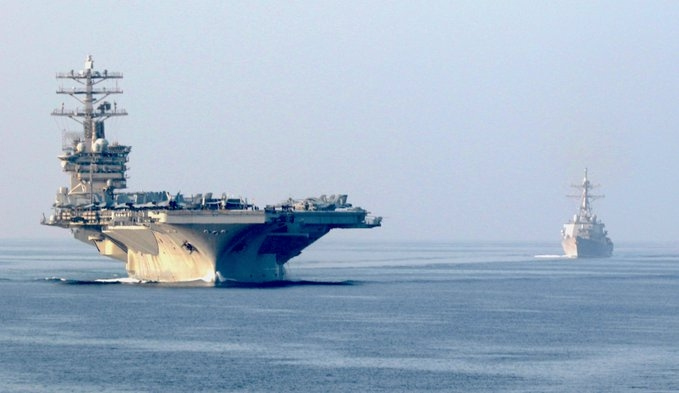South Korea is developing a light aircraft carrier. It is a clear signal that north-east Asia is witnessing an arms race as the geo-political situation frays globally and countries fret for their security.
In June this year, two of South Korea's global conglomerates, Hyundai Heavy Industries and Daewoo Shipbuilding and Marine Engineering, unveiled designs for the South Korean navy. The designs have given considerable insight to military experts about what the South Korean government is looking for.
What is South Korea seeking in its first aircraft carrier
What is clear is that South Korea plans a 30,000-35,000 tons carrier, which is considerably smaller than the ones operated by the US and China, and even the UK. In comparison, the British HMS Queen Elizabeth carrier, currently in the region, is 65,000 tons while the American aircraft carriers weigh at least over 80,000 tons.

One of the designs of the South Korean aircraft carrier
The carrier will be immensely suitable for helicopters and the US-built F-35B stealth fighters that require a short runway and can land vertically.
The South Korean carrier is also going to be an indigenous one. The country plans to spend the budget of $20.4 billion mostly on designing and manufacturing the vessel in-house over a period of about 13 years. It has set a deadline of 2033 for the project.
India Narrative spoke with Vice Admiral Shekhar Sinha, former commander-in-chief, Western Naval Command, about the South Korean need to acquire the mean machine. "South Korea always has to watch its back because of North Korea, therefore, it feels a threat from China as well", Sinha said.
He added that the South Korean plan will change the while dynamics in the region. "If South Korea becomes powerful, it will bring stability to South China Sea also. The acquisition of such an aircraft carrier also means that Seoul will procure the F-35 fighters from the US, adding to its power".
The big debate in Seoul
The ambitious plans have opened up a big debate in the country whether the proposed aircraft carrier is a necessity or a vanity project for the leaders.
The South Korean navy is clear that it requires the light aircraft carrier for defence due to the changing security situation in the region. It is North Korea that remains a security concern for Seoul and "neighbouring countries". It has also said that a carrier will provide yet another option to launch fighter jets against an enemy, besides the fact that the places can be moved closer to the targets. It will also allow Seoul to protect its sea lanes in the South China Sea–a heavily contested region.
Those opposing the venture say that the country could possibly look at submarines, the Aegis destroyers and missiles. Even though North Korea is a constant threat, its military is still poorly trained and works with obsolete weaponry.
Aircraft Carriers in the region
Currently only China and Thailand operate aircraft carriers in the region.
The Thai vessel rarely leaves the port, and when it does so it makes for celebratory news in the country's media. When it is not prowling in the waters, which is more often the case, it makes for a great tourism destination for Thai travelers.
When the Chinese aircraft carriers float around in the region, the intentions are usually twofold–to recce for a possible attack on Taiwan and also to intimidate the Japanese and the Taiwanese nearby. The two Chinese aircraft carriers have been sailing in the East China Sea and the Taiwan strait in challenge to the US forces deployed in the region.
Japan has helicopter carriers which it is converting into a light aircraft carriers to house the F-35Bs from the US. This would be the first time since the World War-II that Japan would be operating these mighty machines.
Sinha adds that there is a massive geo-political turmoil worldwide. "The entire world order is changing and that too in such a short span of time. This is mostly because of China which thinks that it has overtaken the US. I think this is a fallacy, which could prove dangerous to China in the future".
With such dynamics across the world, it is no wonder that South Korea is arming itself better.
Read more about the navies in the Indo-Pacific region:
China sends second ship to spy on US-Australia military exercise
India outlines its benign Indo-Pacific strategy with deployment of four warships
France joins anti-China coalition, sends nuclear submarine to South China Sea
India-France military cooperation deepens with INS Vagir submarine
Myanmar inducts Indian submarine in signal to China
Germany joins warship swarm in the South China Sea
Chinese fishing trawlers swamp Arabian Sea, Baloch fishermen protest
China’s sand-sucking dredgers target Taiwan with eco-warfare
Vietnam asserts rights over disputed Spratly islands through its lighthouses




















